

VICAR VICAR OFCHRISTOFCHRIST

From the Editor
Don Bosco once said, “Where the Pope is, there is the Church. Whoever is with the Pope is with God.” For him, love for the Pope was not merely admiration it was fidelity to Christ Himself The papacy was a living anchor of unity, a shepherding voice guarding the young and the poor.
We recall the Gospel scene of Peter at Caesarea Philippi, trembling yet chosen Jesus did not choose the strongest, nor the most perfect He chose the one who loved Him most. “You are Peter, and on this rock I will build my Church.” From that fragile fisherman came a line of successors who, through centuries of storms and triumphs, continue to carry Christ’s voice into history.
This issue is a humble homage to that sacred continuity From Don Bosco’s time to ours, the Pope remains a father, a compass, a living sign that Christ has not abandoned His Church.
May this edition reignite in us not just admiration but filial love, fidelity, and prayer for the Successor of Peter




o he Pharisee’s
bl


In chapter 14 of St Luke’s Gospel, we find the account in which Jesus accepts an invitation to dine at the home of an important Pharisee. Jesus enters a space thick with social calculations and feigned religious attitudes wherein the dinner becomes a theater of human ambition, with guests competing for places that reflect their perceived status and importance.
Jesus,alwaysakeenobserverof humannature,transformsthis momentofsocialmaneuvering intoaprofoundteachingonthe veryfoundationsofChristian discipleship.
Let us try to understand how this situation speaks to us who are engaged in the education and evangelization of young people. How often we too find ourselves conditioned by certain traits that Jesus calls by name: the subtle competition for recognition and influence and the desire to appear as the best of all. I believe that the Pharisee's supper becomes a mirror for our ministerial and pastoral realities, challenging us to examine our motivations, our methods, and our daily choices
The Problem: Illusions of Preeminence
Jesus notes how the guests choose places of honor, revealing a fundamental human tendency that goes far beyond dining etiquette. This race for the places of honor exposes what we might call the “illusion of preeminence" thefalsebeliefthatourworthand effectivenessaremeasuredbytherecognition, status,andhonorsthatothersbestowuponus.
It is an illusion that is also a trap for us educators involved in youth ministry. It is a temptation that manifests itself in numerous ways. We may find ourselves seeking appreciation from parents, recognition from administrators, or gratitude from students We may subconsciously compete with colleagues to be named the "most effective teacher" or to be regarded as the "youth worker whom everyone loves." Thedesireforpreeminencecaninfiltrateour missioninasubtleway,transformingwhatshouldbe selflessserviceinto“performance”andfollowing one'sownagenda.
Let us not forget that the illusion of preeminence is particularly dangerous when working with young people for they possess a keen sensitivity as regards authenticity and immediately perceive when adults use them as a means for personal validation rather than investing themselves totally in their integral growth
When we operate from the illusion of preeminence, we inadvertently teach young people that relationships are transactional and utilitarian; that love is to be earned through performance; and that others are stepping-stones for our personal ambitions

The First Lesson: Choosing the Last Place
Jesus' instruction to take the lowest place rather than presume honor represents more than a social strategy it requires a fundamental reorientation of the heart True humility is not self-deprecation or false modesty, but rather an accurate understanding of our position before God and in relation to others.
In educational and pastoral realities, choosing the last place means approaching young people without the presumption that our age, experience, or position automatically grants us authority or respect. It means being willing to learn from them, being surprised by their insights, and recognizing that we do not have all the answers. Thishumility createsspacefortheemergenceofanauthentic relationship.
When we choose the last place we model for our

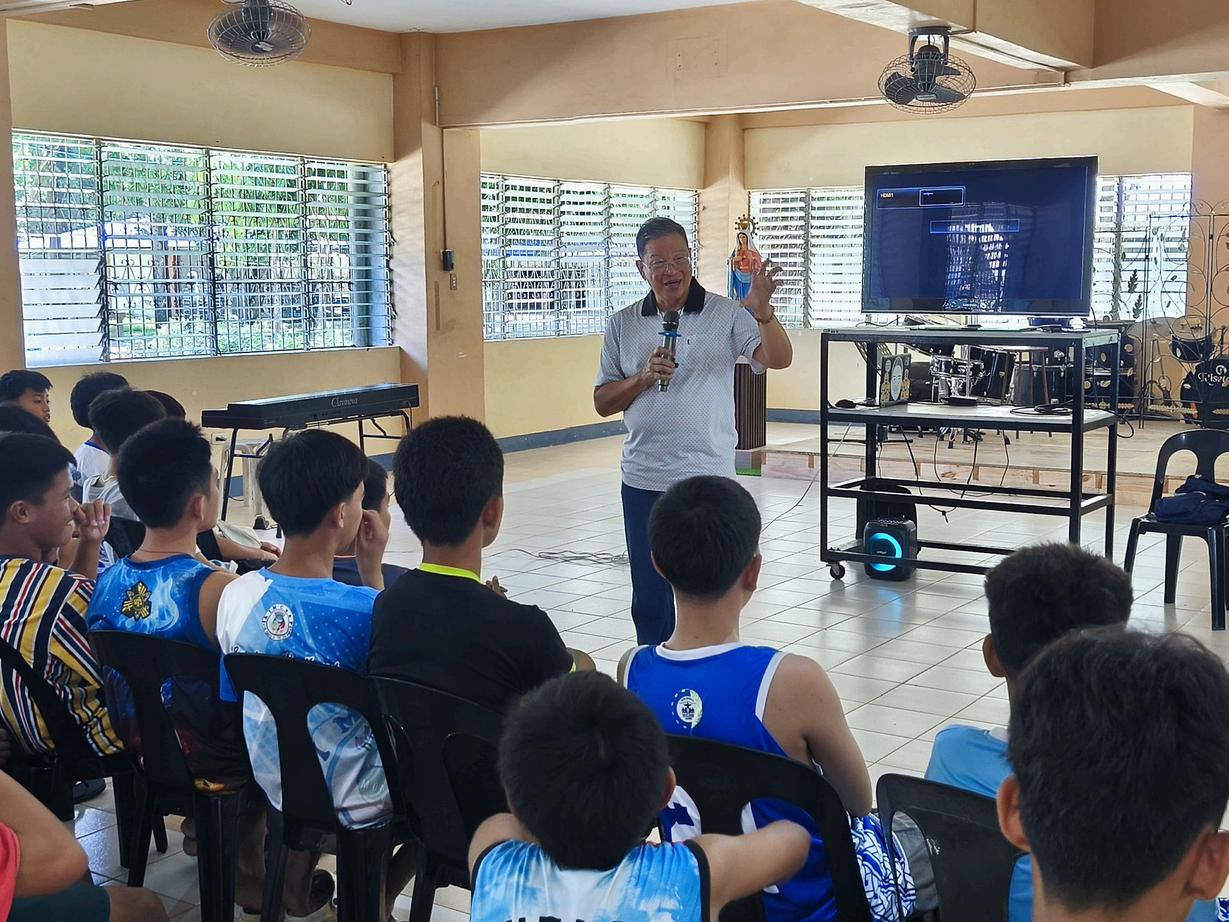
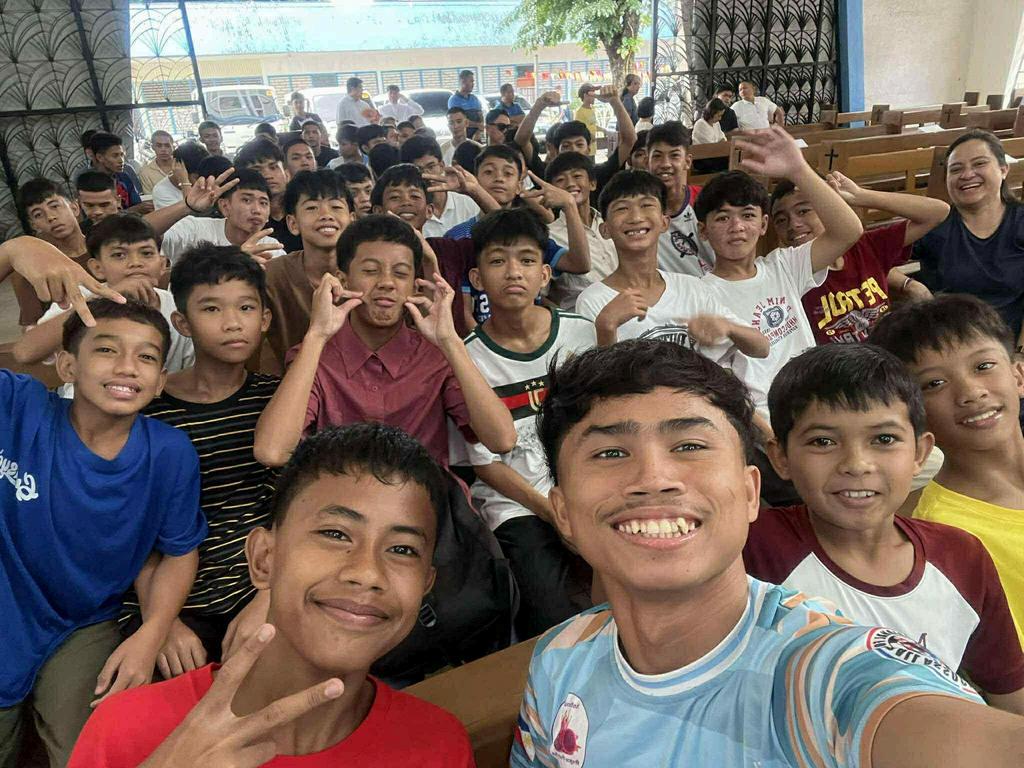
2
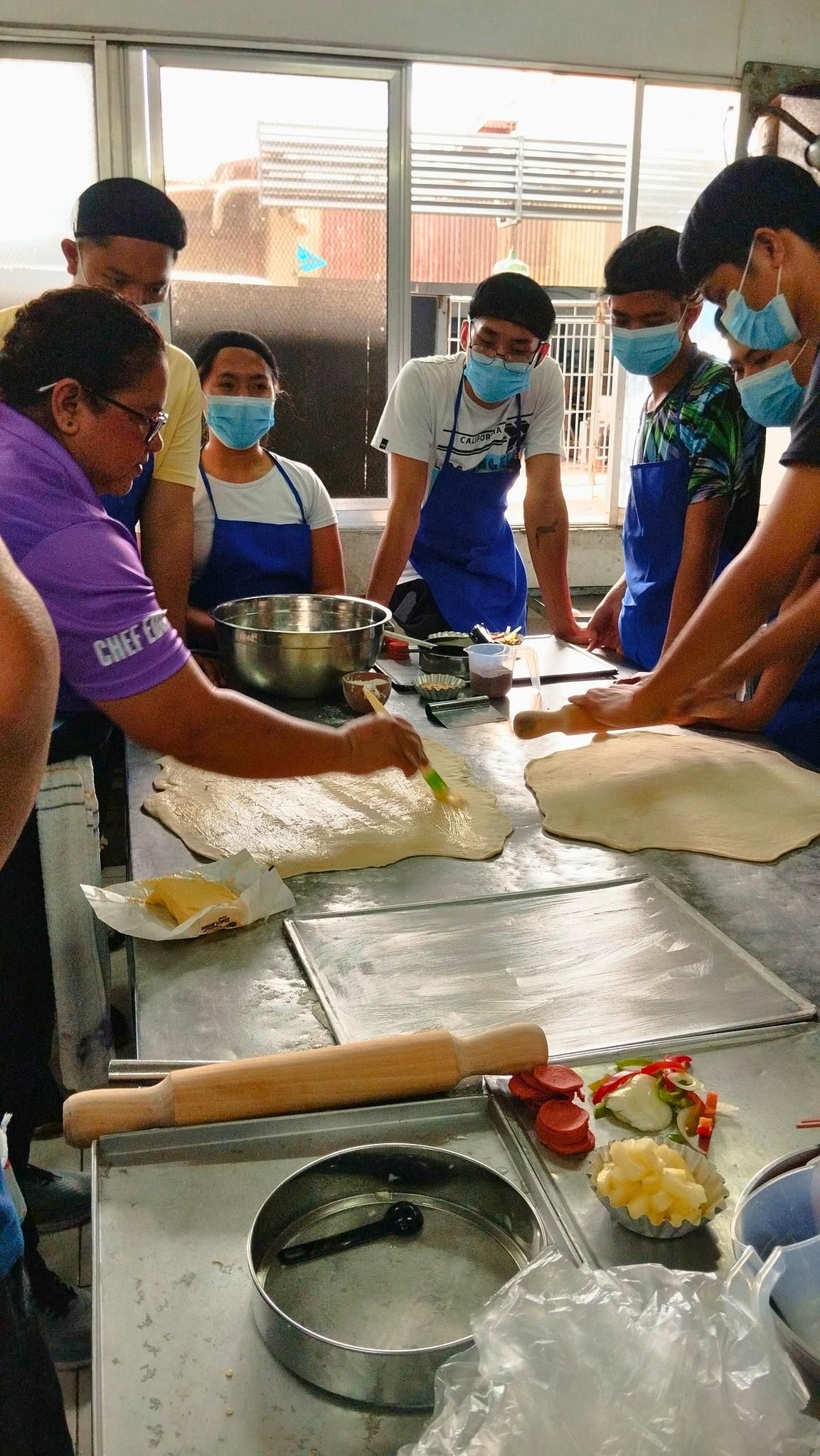
The Second Lesson: Practical Charity
Jesus then moves from commenting on personal humility to a proposal of structural charity: inviting "the poor, the crippled, the lame, and the blind" rather than those who can reciprocate represents a radical shift in the nature of a relationship – one based on giving, not exchanging
Too often, our energy and attention gravitate toward young people who are easier to deal with, who are more responsive to our efforts, or who make us appear successful. We naturally invest in relationships that provide positive feedback and visible results
Jesuscallsustoacompletelydifferentreasoning.He challengesustoseekoutthosewhocannotincrease ourreputationoradvanceourprograms the strugglingstudent,thesocially-awkwardadolescent, theyoungpersonwithadifficultbackground,theone whosequestionschallengeourcomfortable assumptions. These are the ones who most need our time and attention and who can teach us best about the nature of unconditional love.
ThegeniusofJesus'teachingliesinlinkingthesetwo movements personalhumilityandpracticalcharity asexpressionsofthesamespiritualreality.
Humility without charity remains self-centered, with the potential to become a form of spiritual pride. Charity without humility can become patronizing or manipulative, serving our need to feel useful rather than genuinely meeting the needs of others.

Truehumilityopensusuptoregardyoungpeoplenot as“projects”tobefixedor“rawmaterial”forour programs,butasbelovedchildrenofGodwith inherentdignityanduniquegifts. This recognition naturally leads to charitable action not charity as pity or condescension, but charity as the recognition of our fundamental interconnectedness and need for each other
Jesus' teaching at the Pharisee's supper issues a radical invitation to all of us: to find our identity not in the recognition we receive but in the love we give, not in the honors bestowed upon us but in our faithful service to those who cannot repay us. For educators and workers among youth, this invitation becomes both challenge and promise thechallengetoexamineourdeepest motivations,andtheconvictionthatfaithful service,evenwhenunnoticedorunappreciated, participatesinGod'stransformingworkinthe world.

By choosing humility and practicing charity, not only do we serve young people more fruitfully but we also incarnate the very Gospel that we seek to share. We become living witnesses of an original way, where greatness is found in service, beauty in self-giving, and tangible joy in the flourishing of others This is the most powerful evangelization of all: lives that bear witness, with joyful humility and genuine charity, to the reality they proclaim.



Community of the Sacred Heart of Novitiate in fraternal gathering
Fr Toto serves chapels in Don Bosco Batulao
Relic of the young saints visits Canlubang

Fr. Mel Racelis, SDB

Todayisthe24thofthemonth Nearly sevenmonthshavepassedsincethis immenseresponsibilitywasentrustedto me andwithallhumility,Icanonly say:allisgrace. Lookingbackthroughthepagesofmy journal,Irealizethatthisjourneydidnot trulybeginonAugust16,thedayofthe newProvincial’sinstallation,butrather onMarch28,2025 themomentwhen Fr.FidelOrendain,duringGC29, acceptedhisappointmentasGeneral CouncilorforSocialCommunications. Fromthatdayon,aquietshiftingof weighthadalreadybegun
Despitemyinitialfearsandhesitation, Ifoundthecouragetosayyes.And sincethen,Ihaveexperienced in unexpectedandevenplayfulways theoverwhelmingtendernessofGod.
A Tuna Story of Providence
Last June 16, after the funeral of Fr. Reynante Sabelita’s father in General Santos City, a simple moment became, for me, a gospel in motion

Fr Randy Figuracion, SDB, and I were preparing to leave for the airport when Fr. Reyn arrived and asked what pasalubong we wanted. Quite naturally GenSan being the tuna capital we replied, “Tuna.” He immediately took us to a specialty shop and generously sent us off with roughly three kilos each
We were already more than content but along the way, he asked again if we wanted more to maximize the allotted 25-kilo baggage Out of courtesy we declined, feeling it was already more than enough
A few kilometers later to our surprise he stopped again, this time at another shop near the airport. There, his sister met us. She approached me with a smile and simply said: “Father, I insist ”
That is how I ended up carrying home a full 25 kilograms of premium tuna all paid for by the generosity of Fr. Ante’s family. Godisgood.Sobra.Sobra.Sobra!
IT IS THE LORD
Inthatmoment,my mindleapttothe Gospelsceneofthe miraculouscatchat LakeTiberias.Asthe netsoverflowed,St. John,withtheclarity oflove,criedout: “ItistheLord!”
Andsonow,withthe samecertaintyand gratitude,Iproclaim: ItistheLord!

I am not the most qualified for this task That I know with painful clarity But I can only bow my head and point to Him.
Unworthy, Yet Held by the Lord

ForitistheLordwhohascalledmeforthe past40yearsofconsecratedlife theLordwhohassustainedmethroughevery trial,temptation,andtriumph anditistheLordwhonowcallsme,once again,totrustHiminthisnewresponsibility.
A confrere wrote to me in their community card, quoting Uncle Ben to Peter Parker:
“With great power comes great responsibility ”
Yes, the weight is enormous. But the love and support of countless confreres, members of the Salesian Family, mission partners, and friends have given me peace instead of fear
Our Province: Small, but BURNING with Mission
In the past months, I have gone around our houses and sat in every Board of Trustees meeting. I have seen firsthand the tremendous good quietly being accomplished across our Province most especially in our peripheries
From Borongan to Calinan, from Mati to Dumangas and Murcia-Mambucal and even as far as Lahore and Quetta in Pakistan the Salesian presence has taken root where the young are most forgotten.
Thisboldmissionarychoice “Gorural” givenbyour earlyProvincialsafterourfoundationin1992,hasborne fruitsthatonlyheavencancount.
Fr Provincial with the young people of the FIS
Yet, after 33 years as a Province, we must also grow into greater maturity. Being on the peripheries should not mean being forever dependent.
More of our houses must seek sustainability not only financially, but vocationally
Weplant,welabor,welove butattheendoftheday,with armsliftedtoheaven, wesurrendereverythingand sayoncemore: “ItistheLord!”
We are currently 79 professed Salesians, with 2 novices, 2 prenovices, and 19 aspirants
We are not many but perhaps, just enough.
Especially because we are not alone.
We are blessed with countless members of the Salesian Family and lay mission partners who walk with us in forming good Christians and upright citizens from whom, wepray,may arisethefuturesaintsand heroesoftheChurchandthe nation.
To my confreres in the FIS Province:
I assure you the Provincial Council and I are fully committed to walking with you these next six years
Let us remain available, listening, and generous as the Rector Major urged us during Fr. William Matthews’ animation visit last August.
I close with the words of St. Augustine, which echo deeply in my heart:
“For you, I am a Provincial and that terrifies me.
But with you, I am a Salesian and that consoles me and gives me great joy.”
MayMary,theLadyofDonBosco’sdreams, remainbesideus thatmiraclesmaycontinuetounfoldforthe gloryofGod, thebuildingofourcommunities, thesalvationofsouls, andourownholiness.
It is the Lord!
—Fr.MelRacelis,SDB
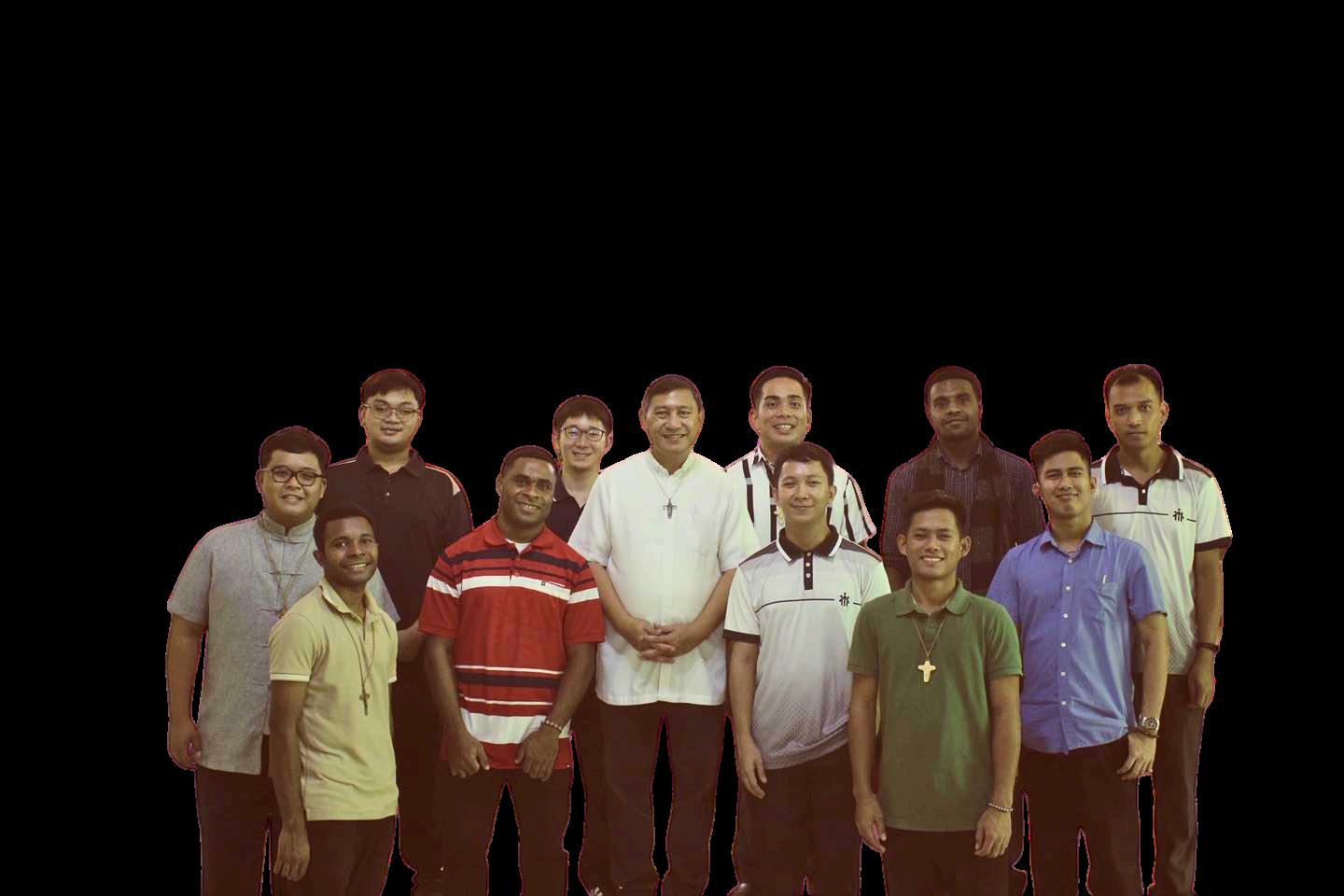


Fr Provincial visits the FIS communities
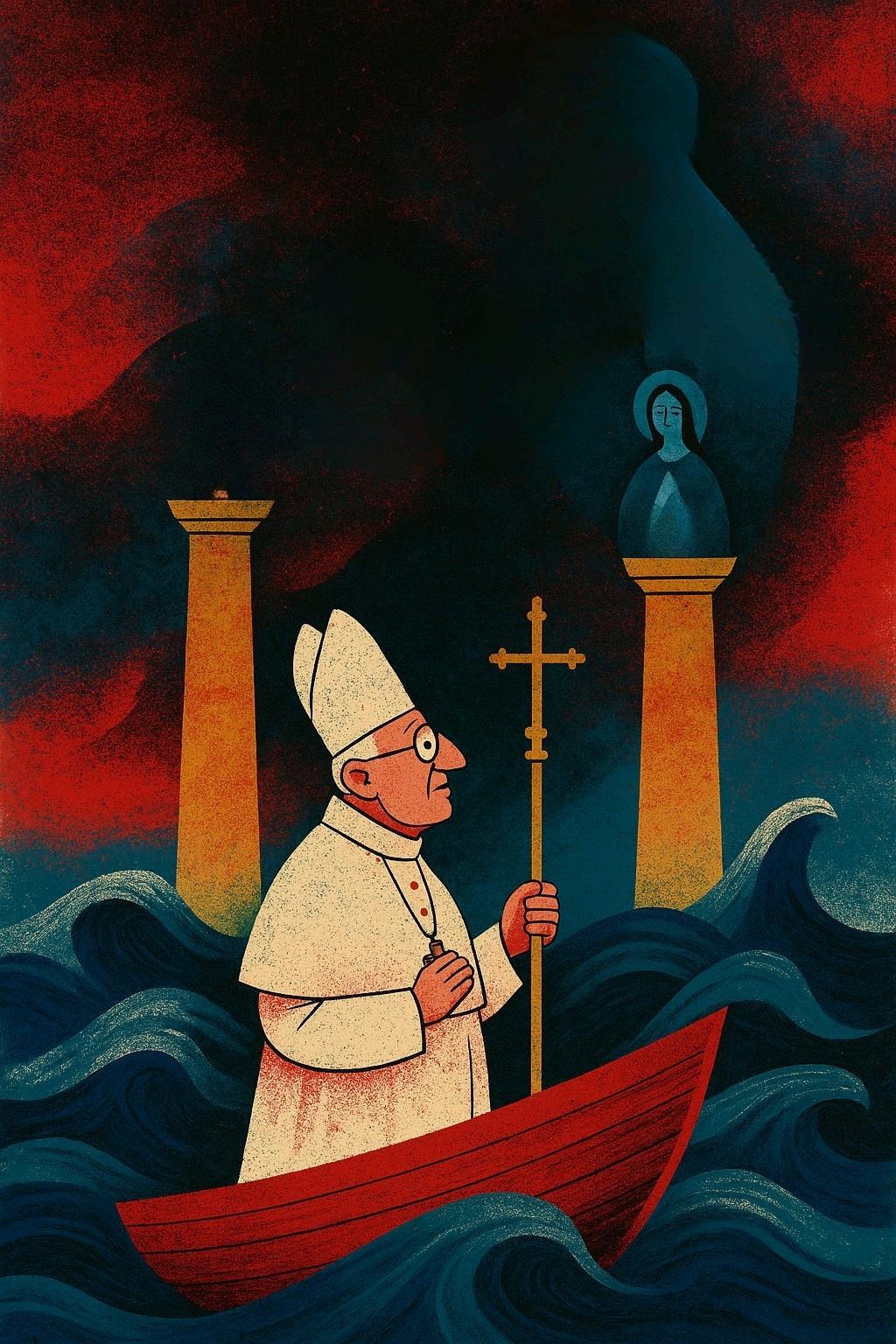
By Willy Arcilla
Anchored to the Two Columns Don Bosco’s Dream for the Church

In May 1862, St John Bosco shared a striking dream that has become one of his most famous prophecies. He saw a vast ocean with two towering columns rising from the waters: on the taller column, the Holy Eucharist; on the lower column, the Blessed Virgin Mary
Inthemiddleoftheseasailedagreatship, symbolizingtheChurch,guidedbythePope. Surroundingitweresmallervessels,hostileand relentless,firingcannonstotryandsinkit.The Pope,thoughheroic,wasstruckdowninbattle. Yetasuccessorquicklytookthehelm,firmly anchoringtheshiptothetwocolumns.Once securedtotheEucharistandtoMary,the Churchwasmadesteady,unshakable,and victoriousoverherattackers.
More than 150 years later, Don Bosco’s dream remains as relevant as ever The Church continues to sail through storms buffeted by opposition from outside and wounded by trials within. But the dream reminds us that her safety, strength, and victory lie in staying

TheThreeWhitesofDonBosco
Don Bosco spoke often of what he called the “Three Whites”: the Eucharist, Mary, and the Pope For him, these were not mere devotions, but the very foundations of Christian life and Salesian spirituality
In 2015, during the bicentennial of Don Bosco’s birth, Pope Francis visited the Basilica of Mary Help of Christians in Turin and exhorted the Salesian family to remain faithful to these “Three Whites ” He urged all who follow Don Bosco’s spirit to continue loving Christ in the Eucharist, to seek the maternal care of Mary, and to remain united with the Pope.
ACallforToday
As members of the Salesian Family and as children of Don Bosco, we are invited to live this dream today not only by defending the Church from heresies and indifference, but by witnessing with joy to the life-giving strength of the Eucharist and the gentle guidance of Mary Anchoring ourselves to these two columns ensures that no storm, no attack, and no trial can prevail against the Church.
May Don Bosco’s dream continue to inspire us: to remain steadfast in love for the Eucharist, devoted to Mary Help of Christians, and loyal to the Pope so that, together, we may guide the ship of the Church toward the safe harbor of Christ.
Don Bosco’s first painting of the dream of the two pillars


By Susan L. Liwanag
At first glance, they lived in different centuries, in very different worlds Yet when we look closer, Don Bosco and Pope Francis seem like two kindred spirits two shepherds whose lives echo the same melody of faith, hope, and love for the young and the poor.
Theirstories,thoughseparatedbytime,revealastrikingresemblanceinprinciples, convictions,andthewitnessoftheirlives.
Don Bosco: A Father to the Young Pope Francis: A Servant Leader
St John Bosco was a man of tireless determination persistent, courageous, and unshaken by opposition. He faced fierce resistance:
anti-clerical forces seeking to weaken the Church,
social and political pressures of a turbulent age, the daunting challenge of caring for poor and abandoned youth.
In response, Don Bosco established the Oratory, a home where young people especially those most at risk could find shelter, education, and belonging What began as a “floating meeting” became a vibrant center of life and faith.
At the heart of Don Bosco’s mission was the Preventive System of education: reason, religion, and loving-kindness His dream was simple yet radical: to form “Good Christians and Upright Citizens.”
His words continue to inspire:
“Give me souls, take away the rest ”
“It is not enough to love the young; they must know that they are loved.”
“Entrust everything to Jesus in the Blessed Sacrament and to Mary Help of Christians, and you will see what miracles are ”
Don Bosco invited his Salesians and young people to anchor life on two great pillars the Eucharist and Our Lady and to live out his “three white loves”: love for Mary, love for the Eucharist, and love for the Pope.
In our time, Pope Francis has embodied the same spirit. Known as the “Servant Leader,” he leads with humility, tenderness, and a special closeness to children and the poor His pastoral heart consistently points to the dignity of every person, urging us to look beyond appearances and embrace life’s deepest realities.
Like Don Bosco, he has faced opposition: criticism for his reforms in Vatican governance, tensions with conservatives, and resistance to his simple, personal style of leadership. Yet he continues to carry the Papacy with quiet strength and grace.
Pope Francis often reminds us that three simple words build harmony in life: “Please, thank you, and sorry.” His tears in Manila in 2015 when a young girl asked why God allows children to suffer remain etched in many hearts “Only when our eyes are washed by tears,” he said, “can we truly understand and respond to the suffering of others.”
WithdeepaffectionforDon Bosco,PopeFrancisoncetoldthe SalesiansthattheirFounder’s face“reflectedthejoyofEaster Sundayratherthanthesorrowof GoodFriday.”
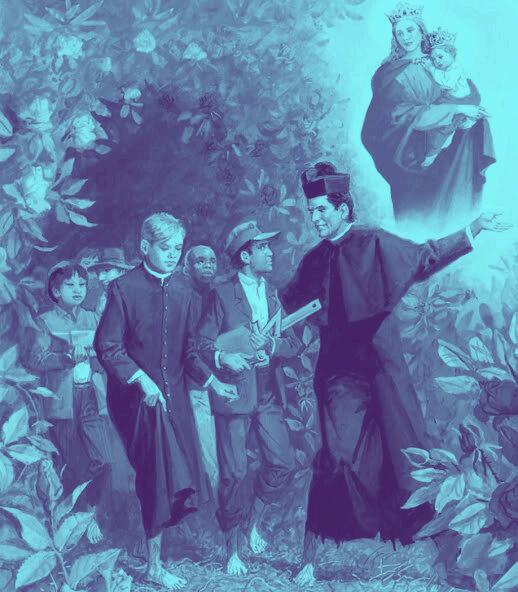


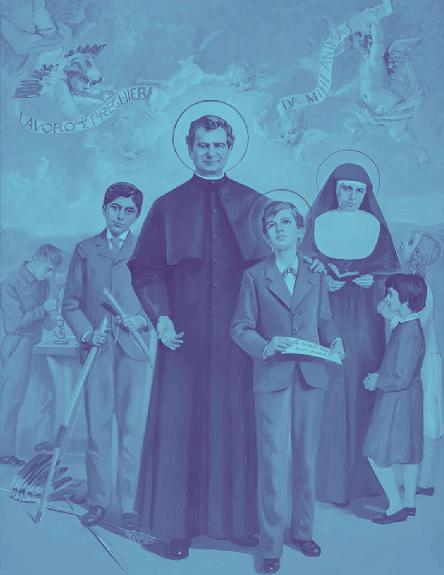

Despite the centuries between them, Don Bosco and Pope Francis share profound likenesses:
DevotiontoMary
Don Bosco: filial love for Mary Help of Christians.
Pope Francis: constant prayer before Mary, Protectress of the Roman People
LovefortheYouth
Don Bosco: built the Oratory as home, school, and playground for the young
Pope Francis: visits children in hospitals and centers, embracing them with fatherly care.
GentlenessofHeart
Don Bosco: rooted his education in loving-kindness, rejecting harsh methods.
Pope Francis: calls for a “revolution of tenderness” toward the poor and vulnerable.

FaithinGoodness
Both believed that social and political corruption was not only a civic problem but also a moral one and that evil can only be overcome with goodness. As Nelson Mandela once said, “The soul of a nation is reflected in how it treats its most vulnerable ”
Shared Witness of HOPE
Don Bosco and Pope Francis are two bright lights pointing to the same truth: God entrusts to us the care of the young, the poor, and the forgotten Their lives remind us that holiness is not lived in grand gestures but in everyday love welcoming, educating, listening, weeping, and believing in the goodness of others.
ForSalesiansandfor theChurch,their likenessismorethan coincidence;itisa call.Towalkwiththe young,tostandwith thepoor,andtotrust MaryandJesusinall things thisisthe pathofjoy,thisisthe mission.
By Owen J. Bandilla ASC,ProvincialHouseSta Mesa
St.JohnBoscocarriedinhisheartthree lovesthatdefinedhislife:theEucharist, theBlessedVirginMary,andtheHoly Father.Thesewerenotseparatedevotions butasinglemelody,woventogetherin harmony ForDonBosco,loveforChrist intheEucharistlednaturallytofilial devotiontoMary,HisMother,and faithfulobediencetothePope,Christ’s Vicaronearth.
This Marian heartbeat a deep love for Mary united with affection for the Pope remains a powerful witness of unity in a world often torn by division and dissent.
DonBosco’sMarianSpirituality
From his earliest years, Don Bosco felt Mary’s guiding hand At nine, he dreamt of her as a radiant shepherdess, revealing his mission to lead and educate the young. From then on, he placed his work entirely under her care He often said, “It was Mary who did everything ”
Outofgratitude,hededicatedhis congregationtoMaryHelpof Christians,convincedthatshe sustainedtheChurchineverytrial. HisMarianspiritualitywasmarked bytrust,simplicity,andachildlike love.Hetaughttheyoungtopraythe Rosary,tocallonMaryinmoments oftemptation,andtolooktoheras bothmotherandguide.

ThePopeasFather
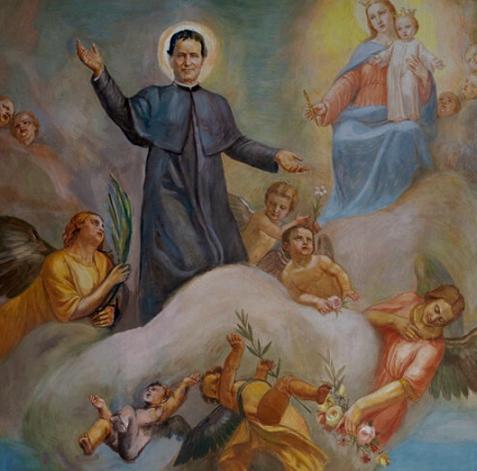
For Don Bosco, the Pope was not a distant authority figure but a true father and shepherd. He saw in the Pope the living sign of Christ’s presence, the successor of Peter, entrusted with preserving the faith and uniting the Church
Obedience to the Pope, for Don Bosco, was obedience to Christ Himself He believed the Pope carried a divine mission: to guide, to protect, and to remind the faithful of their unity in Christ.
Pope Leo crowns the Child Jesus with Mary
TwoLoves,OneHeart
Don Bosco’s devotion to Mary and his love for the Pope were inseparable Mary, obedient to God’s will, became for him the model of fidelity to the Church Just as she stood beside the apostles, strengthening them in their mission, Don Bosco urged his Salesians and young people to pray for the Pope, asking Mary’s protection over him and his ministry.
HebelievedMariandevotionwouldlead naturallytoadeeperlovefortheHolyFatherand agreatertrustintheChurch.
AMessageforToday
In our own time, when authority is often questioned and divisions within the Church seem amplified by social media, Don Bosco’s witness is especially relevant. Fidelity to the Pope is not blind submission but a loving response to the one entrusted with Peter’s mission of guiding the Church in truth and charity
We, too, can nurture this Marian heartbeat by:
Cultivating a personal relationship with Mary – turning to her in prayer, imitating her virtues, and praying the Rosary
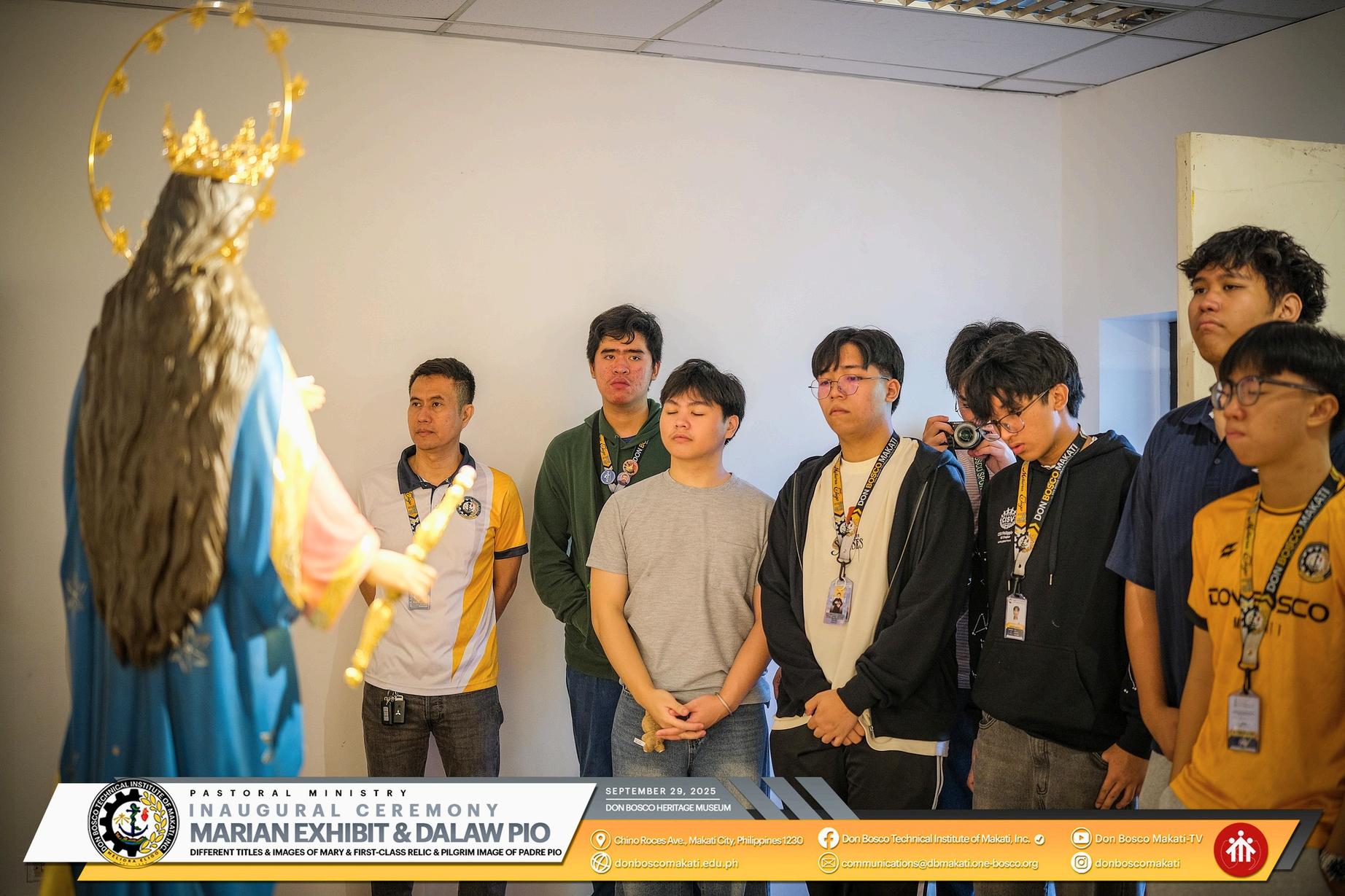
Conclusion
Don Bosco’s life is a living testament to the strength of a Marian heart united with loyalty to the Pope His legacy invites us to do the same: to root our lives in Mary’s maternal love and in fidelity to the successor of Peter.

Studying the Pope’s teachings – reading his encyclicals and exhortations to understand his vision for the Church.
Praying for the Pope – asking Mary to guide and protect him, and to strengthen the unity of the Church
Promoting unity and charity – resisting divisive words and choosing love over selfinterest.
Imitating Mary’s obedience – saying “yes” to God’s will with generosity and trust, open to the Church’s guidance

By walking this path, we not only grow in love for Christ and His Church, but we also become joyful witnesses of the Gospel faithful children of Mary and loyal sons and daughters of the Pope, ready to serve with joy and generosity.
May our Marian heartbeat, like Don Bosco’s, beat in rhythm with the Church and keep us faithful to Christ, His Mother, and His Vicar on earth.
Marian Exhibit at Don Bosco Makati

AMotherWelcomesaMother’s Child
A tender moment from the Marian Pilgrimage at Don Bosco Technical Institute, Makati: a mother quietly awaits her son who returns not just from a journey, but from the embrace of another Mother, Mary Help of Christians.
This annual tradition has long been a sacred part of DBTI Makati’s Salesian identity a pilgrimage not only of bodies, but of hearts, forming young Bosconians under the maternal gaze of the Madonna
In this photograph, beautifully captured by Mr.NowelDela Cruz, local delegate for social communications of DBTI, we witness a silent but powerful exchange: the joy of a mother receiving her son from the care of the Mother of all.
From Mary to mother this is Don Bosco’s tenderness made visible

By Hearty Valerie S. Romero
In the bustling streets of 19th-century Turin, St
John Bosco began gathering poor and abandoned boys, offering them what few others could: a safe place to learn, to pray, and to hope. With little money and no school building of his own, Don Bosco would rent spaces only to be evicted again and again Yet he never gave up For those boys, he was their only hope Anchored in his devotion to the Blessed Mother, he trusted that she would guide him through every trial.
Turin was a city torn by political unrest and economic hardship Families struggled to put food on the table; many lived in cramped rooms, others were evicted and left homeless Amid this poverty, Don Bosco became a priest of the people visiting the sick, comforting the dying, and praying with families for healing. Time and again, through Mary’s intercession, miracles of peace, forgiveness, and even recovery unfolded
When cholera struck Turin in 1854, Don Bosco had already warned of its coming. With 40 of his boys and fellow priests, he went into the streets to care for the sick and dying. Neighbors came knocking on his door for help. And though the disease claimed many lives, not one of Don Bosco’s helpers fell ill a miracle he attributed to Mary’s protection


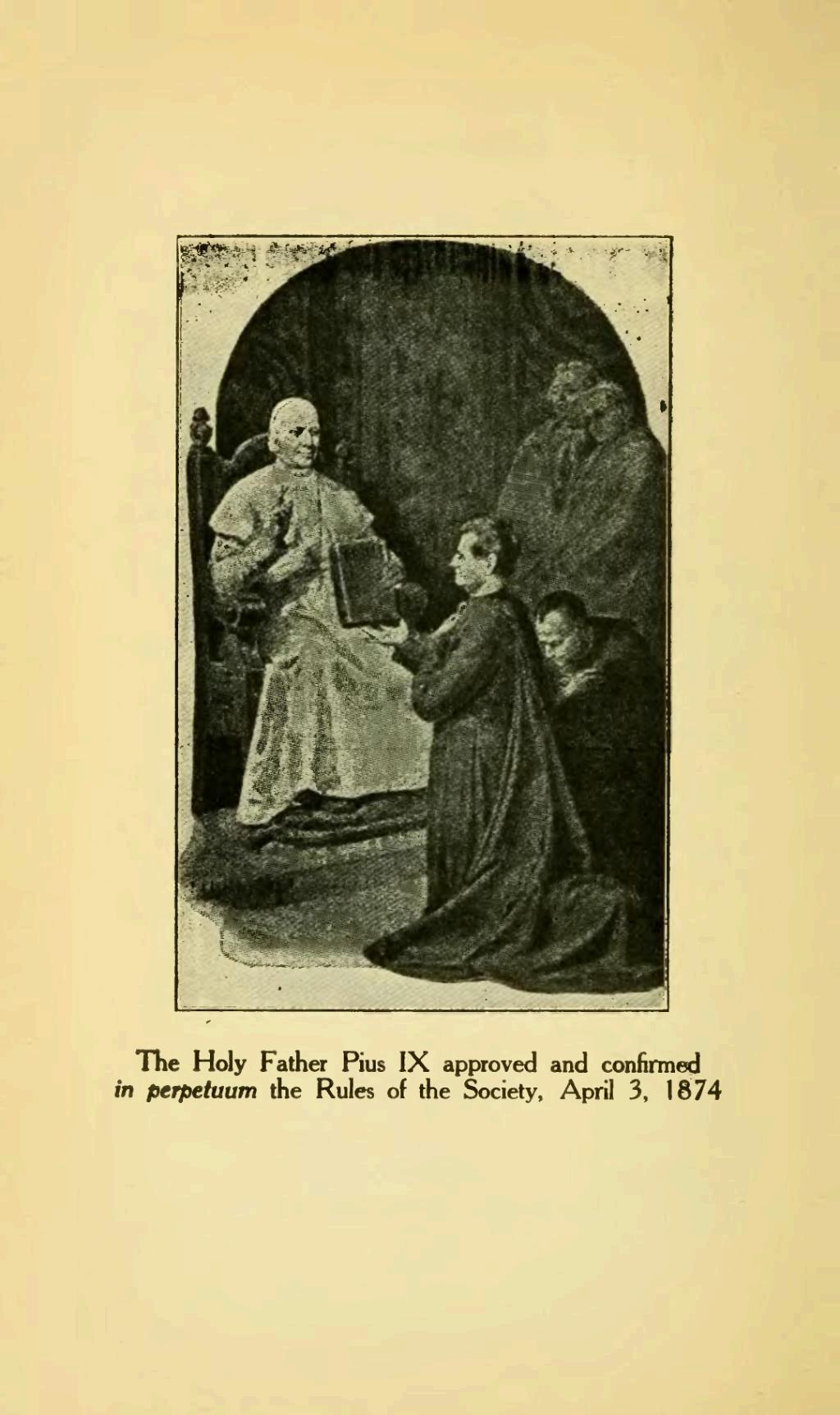
PopePiusIX:DonBosco’sPope
At the same time, the Church was being shepherded by Pope Pius IX, Giovanni Maria Mastai Ferretti, a man destined to play a pivotal role in Don Bosco’s mission Born in 1792, Pius IX endured illness in his youth before being healed at the Shrine of Loreto He was ordained in 1819, served as a missionary in Chile, and by 1846, at just 54 years old, was elected Supreme Pontiff. Pope Pius IX introduced reforms in the Papal States, but his refusal to support war against Austria in 1848 sparked fierce opposition Yet in his long pontificate the longest in Church history he remained steadfast in faith and leadership.
OnMarch9,1858,DonBoscometPiusIXforthe firsttime.Accountssaybothmenrecognizedin eachotherthepresenceofholiness.ThePope knewofDonBosco’stirelessworkfortheyouth, whichhadalreadyspreadfarbeyondTurin.Their meetingmarkedthebeginningofadeep friendship onethatwouldhelpshapethe SalesianFamily.
GuidingtheSalesianMission
It was Pope Pius IX who encouraged Don Bosco to form his congregation, advising him to call it a “Society” more suited to the times He recommended simple vows, a modest habit, and a practical spirituality rooted in prayer. At the Pope’s suggestion, Don Bosco also began writing his memoirs, leaving behind a spiritual legacy for future Salesians.
During his pontificate, Pius IX approved the Constitutions of the Salesian Society, the foundation of the Daughters of Mary Help of Christians, and the Union of Salesian Cooperators enrolling himself as one of the very first members.

Don Bosco, for his part, loved Pius IX deeply and followed his guidance faithfully, even when it required sacrifice “I am ready to face any difficulty,” he would say, “when dealing with the papacy and the Church ”
The Pope, in turn, held Don Bosco in great esteem, often calling him to Rome to advise on delicate matters.
AnEnduringLegacy
ThefriendshipbetweenDonBoscoandPopePiusIX gaverisetooneofthemostinfluentialreligious familiesintheChurch one dedicated uniquely to the young. Through their collaboration, the Salesians were born, embodying Don Bosco’s vision of Catholic education, love for the sacraments, devotion to Mary, and fidelity to the Pope
Today, the Salesian Family continues to carry that legacy forward. The dream that began in the poor streets of Turin now embraces the youth of the world because, as Don Bosco always said: “Give me souls, take away the rest ”



God always raises leaders at the right time men and women of faith who guide the Church toward Christ and keep alive her mission of salvation. In our time, Pope Leo XIV, RobertFrancis Prevost, stands as such a figure. For today’s youth, he is not only the Pope, but also a companion on their journey one who listens, encourages, and challenges them to live courageously.
Pope Leo XIV as a Compass for Today’s Youth
ALifeofDepthandMission
Before becoming Pope, Robert Francis Prevost pursued mathematics and philosophy alongside his theological studies a sign that faith and reason can enrich one another His years of missionary service in Peru shaped his pastoral heart, teaching him humility, intercultural understanding, and dedication to those most in need.
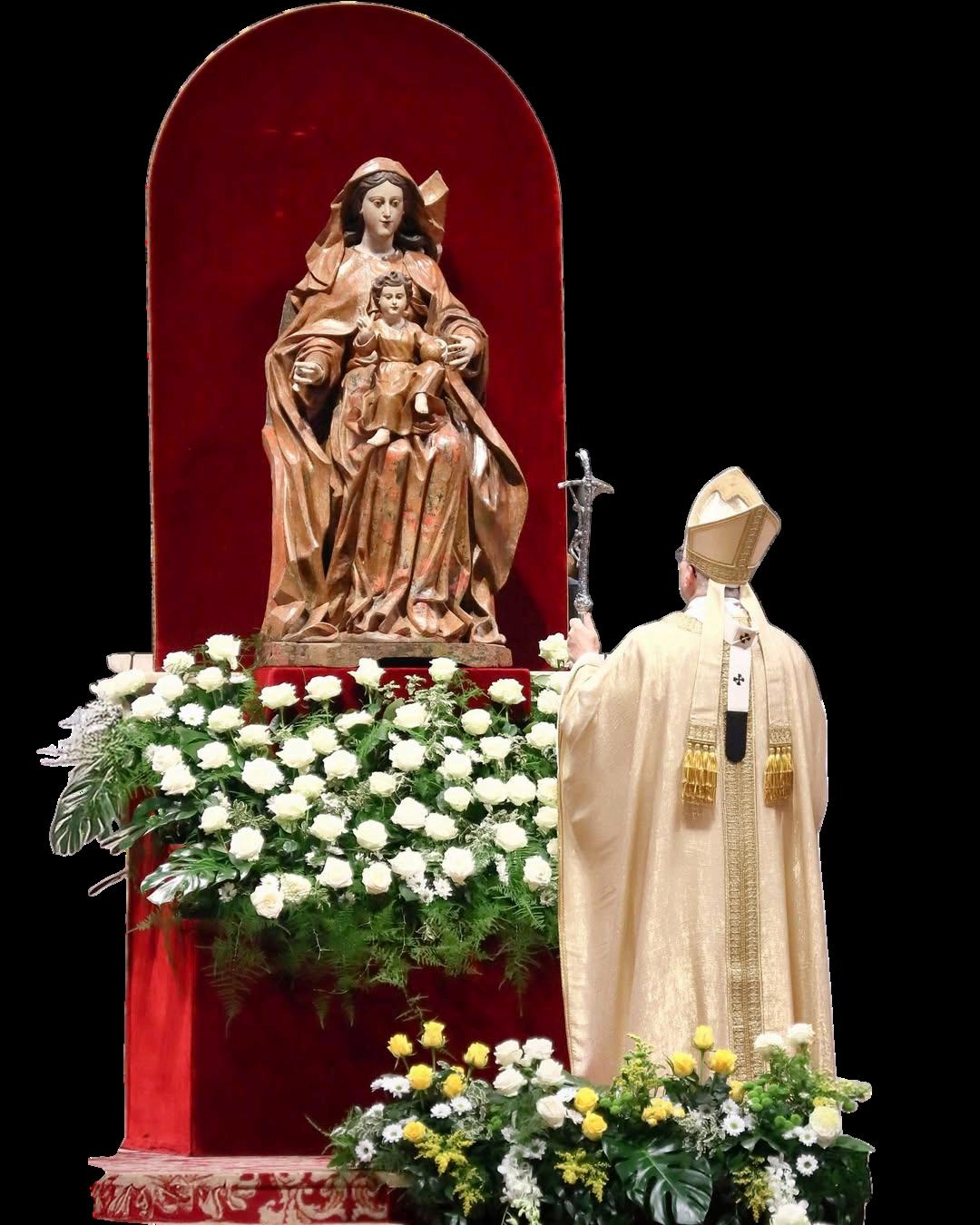
Thisblendofintellectualdepthand missionaryspiritnowshinesinhis papacy,whereheshowsthatwisdomis notreservedforscholarsbutcaninspire concreteservice,compassion,and leadershipintheChurch.
APopeWhoSpeakstotheHeart
For the young, Pope Leo XIV is like a compass pointing toward what is authentic and life-giving He speaks boldly on urgent global issues: calling for an end to war and violence, defending the dignity of refugees and the poor, and urging world leaders to take climate action to protect creation.
Within the Church, he embraces dialogue and reform insisting on transparency in addressing clerical abuse and opening conversations about the role of women in ministry. He does not shy away from difficult questions but approaches them with clarity, humility, and hope.
His words during the Jubilee of Youth still echo:
“Youarethesaltoftheearth.Youarethe lightoftheworld.Youarethemessage, andyoumustcontinuetobringhopeto all.”
These words remind young people that they are not bystanders, but protagonists of history called to shape the future with courage and faith.
APopeWhoWalkswiththeYoung
“May dating si Pope Leo XIV sa mga kabataan!” He has a way of connecting with them In every encounter, he takes time to listen, to smile, and to speak in a language that resonates. The joy on the faces of the youth who meet him is telling: they feel seen, heard, and loved.
It is no surprise that vloggers, influencers, and digital creators highlight his words and presence His authenticity is contagious, and through it, many young people are finding their way back to the Church.
ACompassfortheJourneyAhead
Pope Leo XIV challenges the youth to rise above apathy and fear, to reject indifference, and to become agents of hope His life shows that holiness is not far away or unattainable it is found in the daily choice to love, to serve, and to stand for truth.
Likeacompass,hedoesnotmerelypointtothe rightdirection hewalkstheroadhimself, withhumilityandconviction.Heinvitesthe youngtofollow,notaspassivefollowers,butas creativebuildersofabetterworld.
In Pope Leo XIV, the Church finds not only a leader, but a mentor for the next generation one who reminds us that grace always guides, and hope always shines
Guided by grace, may the youth of today find in Pope Leo XIV a compass leading them toward faith, service, and a future filled with hope.
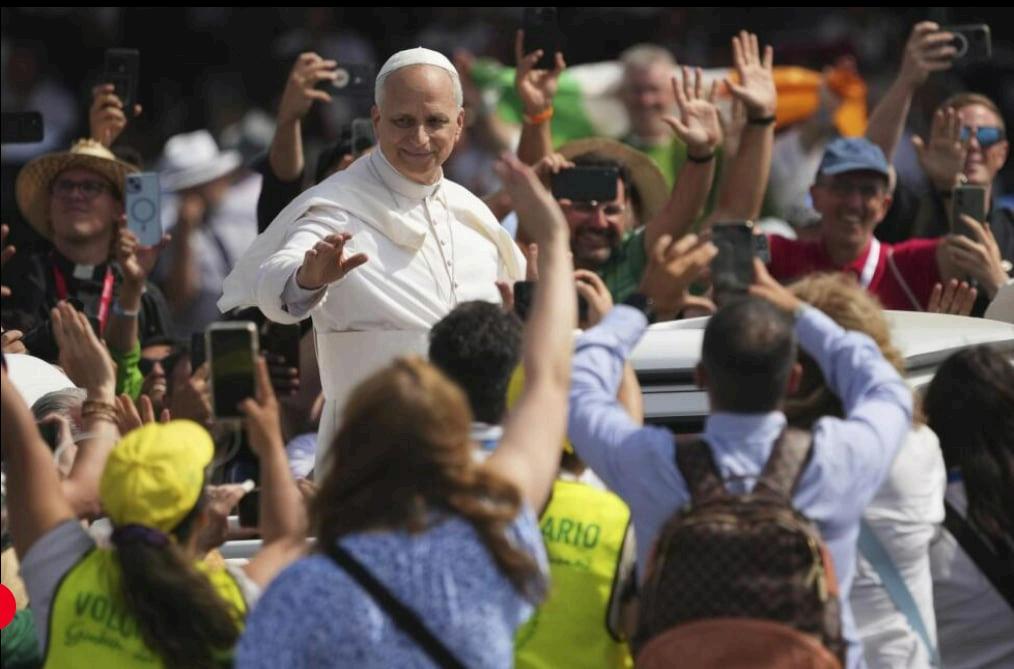



Saint Maria Troncatti
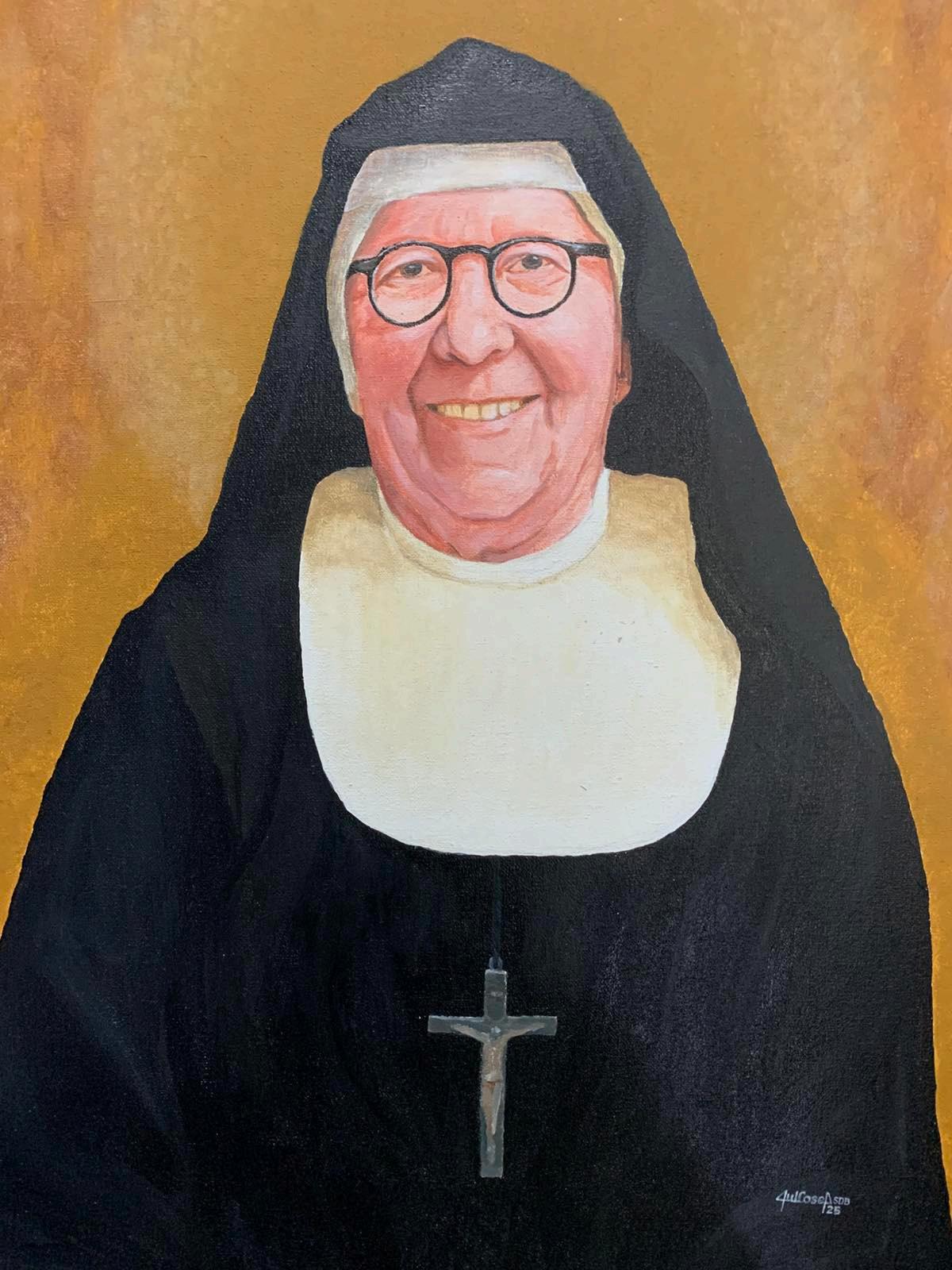
Born in 1883 in Italy, Maria Troncati was a Salesian Sister, nurse, and missionary to the indigenous Shuar people of the Amazon forest in Ecuador Known for her gentle strength, joyful simplicity, and maternal courage, she brought not only medical healing but the peace of Christ. She risked her life countless times to defend peace between warring tribes and earned their trust as Mama Troncati To them, she was doctor, mother, catechist, and friend

ABOUTTHEARTIST
This painting was lovingly handpainted by Br Julieto Cosep Jr , SDB, a Salesian Cleric known for his profound gift for sacred art. In honor of the canonization of St Maria Troncati, FMA, he created this piece as an act of deep tribute capturing her maternal heroism, missionary courage, and silent holiness. A QRcode is provided below for those who wish to discover more about her extraordinary life and witness
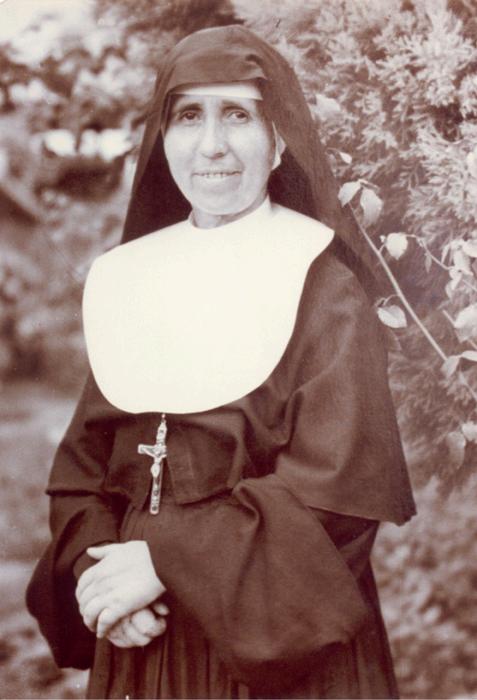


By Jemaica R. Bercarsi
Why am I walking so fast? Am I in a race or rushing for a competition? My heart beats wildly as though reminding me to slow down, to breathe, to be still
The truth is, I only want to be on time 6:30 a.m. sharp for my daily visit to the Mary Help of Christians Chapel. For me, this is not a routine. It is a lifeline It is where my spirit finds rest, where my doubts dissolve in the presence of Someone who sees me completely and loves me without condition.
I bow, not out of defeat, but because I know Who sustains me. I pray, not out of fear, but because I have already encountered Him in conversation He who never responds with judgment, but with mercy In that quiet corner of the chapel, on my knees, I am certain: I am heard
Thatsacredspaceallowsmetobemosthonest,most unfiltered.Ibringmyburdens,mydreams,myquestions. AndIhavelearnedovertime:Helistens.He not only listens, but He walks with me through every trial. That is why hesitation no longer has the final say To ask for guidance is not weakness it is courage It is the bravery to admit, “I don’t know everything, but I trust the One who does.” Where trust lives, fear fades.


APope’sChallengetotheYouth
This is one of the lessons I have received through our beloved Pope Leo XIV He reminds us:
“Through Jesus’ example, we see that as human beings, we are not able to reach true fulfillment or salvation on our own. We cannot finish the mission of our life by simply accumulating power or money We need the help of those who love and care for us, especially the Lord Jesus There is no shame, therefore, in asking for help and opening ourselves to others since we are created by God to give and receive love. Let us realize then, brothers and sisters, that there is nothing more human, nothing more divine than asking for help ” His words pierce my heart I admit I often hesitate to ask for help, fearing that others may not respond. But in his message I see a mirror of my own struggle, and slowly, a lesson begins to take root: to ask is not to be weak, but to trust. To seek help is to believe that God already goes ahead of me, ready to embrace me in my vulnerability
NoOneLivesAlone
The words of Scripture echo this truth: “Walang sinuman ang nabubuhay para sa sarili lamang, walang sinuman ang namamatay para sa sarili lamang…” No one lives or dies for oneself alone.
As a Salesian Cooperator and educator, this has become my calling. I am never meant to walk this journey alone. To ask for God’s guidance is not surrender but strength it is the anchor that keeps me steady
In a world clouded by uncertainty, He remains constant: speaking, listening, waiting. He assures me daily that I will never carry my mission by myself.
Conclusion
Now, I am no longer afraid to ask. Because in the very act of asking, I am already held. Trusting in His love, I move forward knowing that I am accompanied, guided, and sustained
This is my strength: not that I walk alone, but that I walk with Him.


By DS Gene Hilado


St. John Bosco’s love for the Pope was not a matter of diplomacy it was a spiritual conviction rooted in faith. For him, the Pope was not just a figure of authority, but the visible Christ on earth the shepherd whom God entrusted to guard the unity of the Church. This conviction shaped his mission entirely and continues to shape the heart of the Church today
Don Bosco believed that fidelity to the Pope was fidelity to the heart of Christ. That is why, in the Salesian tradition, love for the youth, love for the Eucharist, love for Mary all naturally led to love for the Pope.
NotPolitical—ButMystical
Don Bosco’s obedience was not strategic It was born of love love for the young, for the Church, and for the salvation of souls. His famous dying words were not nostalgic, but prophetic:
“The Salesians have as their special mission to defend the Pope wherever they are, wherever they work ”
The Popes of our time have not only remembered these words they have embodied them.

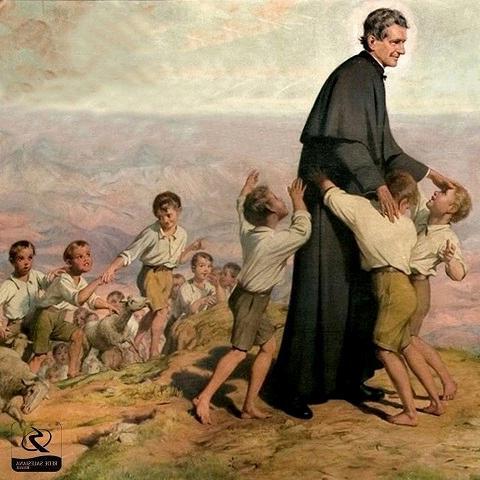


AFireThatContinuestoBurnintheChurch
From Pius IX to Francis, the Popes have not merely honored Don Bosco they have drawn from him.
They recognize in him not just a founder of a congregation, but a spiritual architect of the modern Church a man sent by God to teach how to evangelize a wounded world with joy, tenderness, and intelligent pastoral charity.
TheRecentPopes FormedbyDonBosco
St. John Paul II shaped in a Salesian parish of Krakow, he deeply absorbed Don Bosco’s joy, his pedagogy of presence, his spirituality of optimism It is no wonder he called Don Bosco “Father and Teacher of the Young”, and personally traveled to Valdocco for the centenary of his death a rare gesture of affection from a Pope
Pope Benedict XVI frequently highlighted Don Bosco’s “reason, religion, and loving-kindness” as a prophetic antidote to modern educational crises, calling him a master in forming free and thinking Christians.
Pope Francis once a student in a Salesian school speaks of Don Bosco like family His entire papacy breathes Salesian traits: joy over fear, mercy over judgment, proximity over prestige. His language “smell like the sheep,” “the Church as a field hospital” is profoundly Salesian in tone

Under the Gaze of Don Bosco and Peter
By Delfin Angeles
ThePopesofMyLife


“O St. John Bosco, father and teacher of youth, teach us to love Jesus in the Blessed Sacrament, Mary Help of Christians, and our Holy Father, the Pope ”
We prayed this every day as boys at Don Bosco Mandaluyong sometimes by habit, sometimes distracted but in truth, the prayer was already planting seeds The three loves of Don Bosco Jesus, Mary, and the Pope were quietly shaping our hearts.
Looking back now, I see how those three loves have guided me through the Popes of my own lifetime
I was born in 1955, under the last years of Pope Pius XII, a solemn bridge between two eras. When Il Papa Buono St. John XXIII died in 1963, my mother asked us to pray for him. Her voice carried the weight of family grief, as though we had lost a beloved grandfather This was the Pope who opened the windows of the Church through Vatican II.
Then came Paul VI, whom I saw with my own eyes in 1970 at Don Bosco Youth Center in Tondo. As a teenager, I blurted in awe, “The Pope is short like some Salesians we know!” Only later did I realize his greatness: carrying the Council forward, promoting dialogue, and quietly suffering for the unity of the Church. His documents Sacrosanctum Concilium, Lumen Gentium, Perfectae Caritatis were like music to the ears of the young Salesians who taught us
Then John Paul I, the Smiling Pope, who reigned only thirty-three days Too short to write encyclicals, but long enough to be remembered with love.
Then John Paul II the Pope of the youth, the pilgrim Pope I still see him in my mind on February 18, 1981 at UST, where I was at the foot of the stage, press badge in hand, taking photos as he spoke with fire and tenderness. He formed our generation To us, he was a saint long before canonization confirmed it
Then Benedict XVI, the theologian whose writings we knew from our studies. When he became Pope, it felt as if a professor had become a father gentle, clear, humble, and courageous enough to resign
Then Francis. My wife and I saw him in 2015 during his catechesis at Paul VI Audience Hall, the bicentenary of Don Bosco’s birth. He spoke with simplicity, as if a parish priest among his people His closeness to the poor, his mercy, his poverty these already mark him with the fragrance of sanctity.


DonBosco’sLoveforthe Pope
Our memories of Popes take us back to Don Bosco himself. In 1880, Pope Leo XIII asked the already frail Don Bosco to complete the Basilica of the Sacred Heart in Rome Out of love for the Pope, Don Bosco obeyed For seven exhausting years, he begged from benefactors, preached, celebrated Masses, and gave his all.
On May 16, 1887, he finally celebrated Mass at the altar of Mary Help of Christians in the Sacro Cuore Overcome with emotion, he paused fifteen times, weeping openly Salesians today call it the Altar of Tears. He confided afterwards: “During that Mass, I understood that all the work I had done, and everything that had happened in my life, was foreshadowed in the dream I had at the age of nine ” Months later, on January 31, 1888, as the Angelus bells rang, Don Bosco breathed his last.
ALineofHoliness
From Pius IX, Don Bosco’s own Pope, to Leo XIII, to the long line of holy Popes since, the Church has been graced with shepherds whose lives radiate sanctity: St. Pius X, St. John XXIII, St. Paul VI, St. John Paul II, and those whom the faithful already hold close in their hearts: Pius XII, Benedict XVI, Francis Rarely in history has the Church seen such continuity of holiness in Peter’s successors.
By Irene Sy

My first teach was my mothe encouraged m lives of the sai through her th know St. Dom simple introd the seed of a d commitment into a lifelong Salesian way o
AJourney
World Youth D Manila becam point of my fa that I first discovered th volunteerism, formatio youth apostolate. More just learning about the f realized the call to live i actively In those days o prayer, service, and celebration, I found the core of Salesian spirituality: faith expressed in joyful action, rooted in love for God and for the young


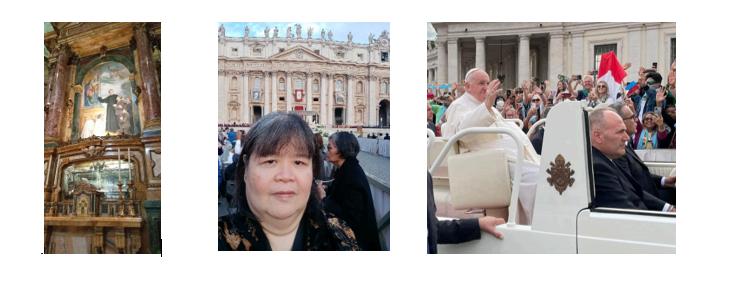
youth of Conti
Formation and community have always been central to this journey. Each encounter, each youth gathering, has helped me grow not only in understanding the practices of our faith, but in building a family of companions walking the same road.
Looking my path and the S journey each day and the s I am gra for Don have ins all, I am ceases to me


Obedience Born of Love
By Ryan D. Gonzales DonBoscoTarlac,ExternalAffairsOfficer ASCLaMP,DBTPPA

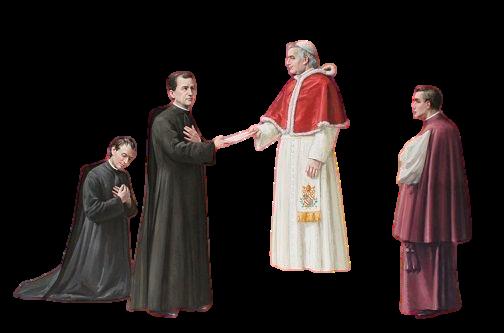
ALoveThatWithstood Storms
In the turbulent 19th century, when revolution and secularism sought to undermine the Church, St John Bosco stood as a beacon of fidelity His love for the Pope was no mere sentiment it was courageous, active, and deeply rooted in faith.
At a time when many abandoned or questioned the papacy, Don Bosco drew closer His obedience was not forged in comfort, but in conflict Through his writings, dreams, and decisions, we see a man whose loyalty to the Holy Father was born not of fear, but of love for Christ, for the Church, and for the young.
AChurchUnderSiege
Don Bosco’s lifetime (1815–1888) was marked by the Risorgimento, the movement to unify Italy In its wake, anticlerical laws stripped the Church of land and influence Pope Pius IX, whom Don Bosco deeply revered, was forced to declare himself a “prisoner of the Vatican” after the loss of Rome in 1870.
In this climate, many clergy distanced themselves from the papacy to avoid persecution Don Bosco, instead, publicly affirmed his loyalty. He taught his boys to pray daily for the Pope, defended papal authority in his Catholic Readings, and risked backlash to remain steadfast. For him, fidelity to the Pope was not political it was pastoral The Pope was the visible sign of Christ on earth
PublicDefenseofthePope
Don Bosco did not defend the Pope in secret he did so in public Through his Catholic Readings, he urged the faithful:
“The Pope is the Vicar of Christ. To attack him is to attack the Church. Let us stand firm in our love and obedience.”
Such words invited criticism from anti-clerical authorities, but Don Bosco pressed on His courage inspired others to remain faithful, helping preserve unity in an age of division.
Teaching the Young to Love the Pope
For Don Bosco, loyalty to the Pope was also an educational mission In the Oratory, prayers for the Holy Father were part of daily life During his Good Night talks, he often spoke of the Pope as a father who needed their prayers and support. He didn’t demand obedience he inspired it. By sharing the Pope’s struggles, he formed his boys to love the Church through love for its shepherd.

ALegacyofFidelity
In today’s polarized world, Don Bosco’s example remains strikingly relevant. His obedience was never blind, but discerning aware of risks, yet rooted in love and unity. His life reminds us that to stand with the Pope is to stand with the Church
For the Salesian Family, this means forming young people who pray for the Pope, listen to his teachings, and see him not as a distant figure, but as a shepherd who walks with us
Sons of Don Bosco, Sons of the Church “Don Bosco and the Pope: Obedience Born of Love” is more than history it is a living call. It challenges us to renew our Salesian vocation in its Eucharistic, Marian, and ecclesial heart Fidelity to the Pope is fidelity to Christ and to His Church
May we, like Don Bosco, be sons and daughters of the Church. May our obedience be born of love. And may our hearts, with Don Bosco’s, beat in harmony with Christ and His Vicar on earth




